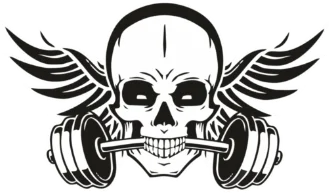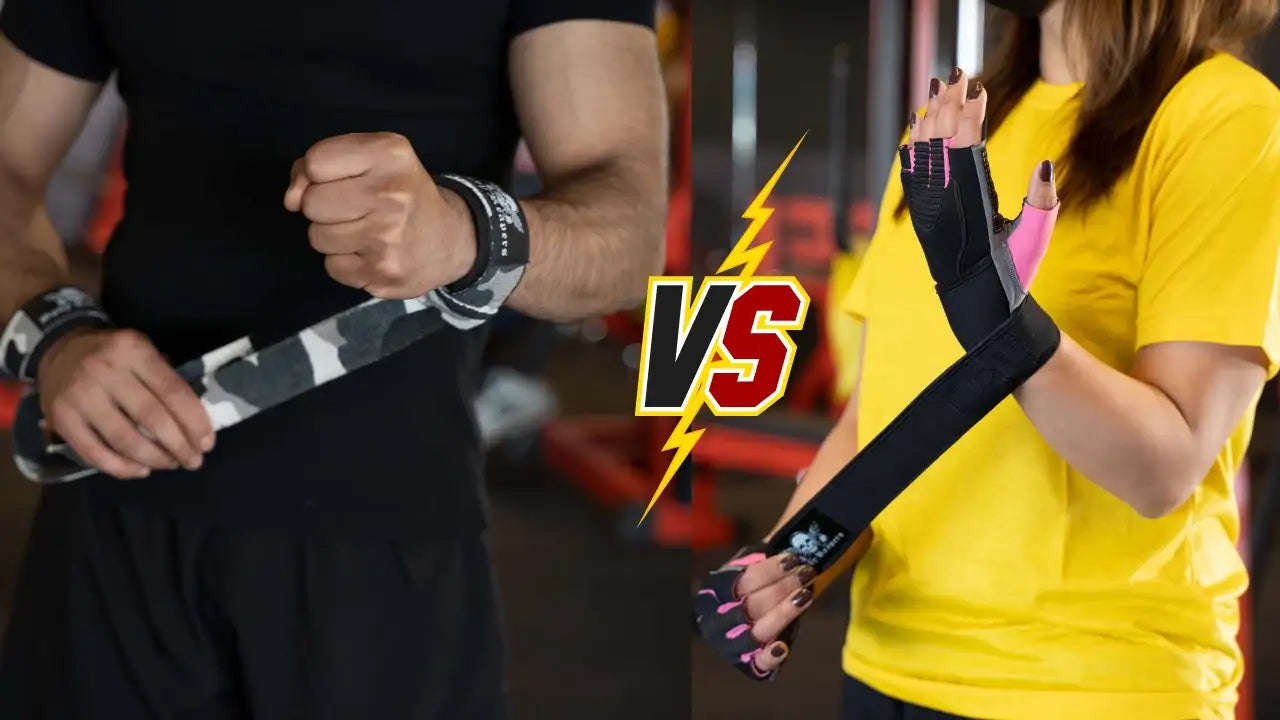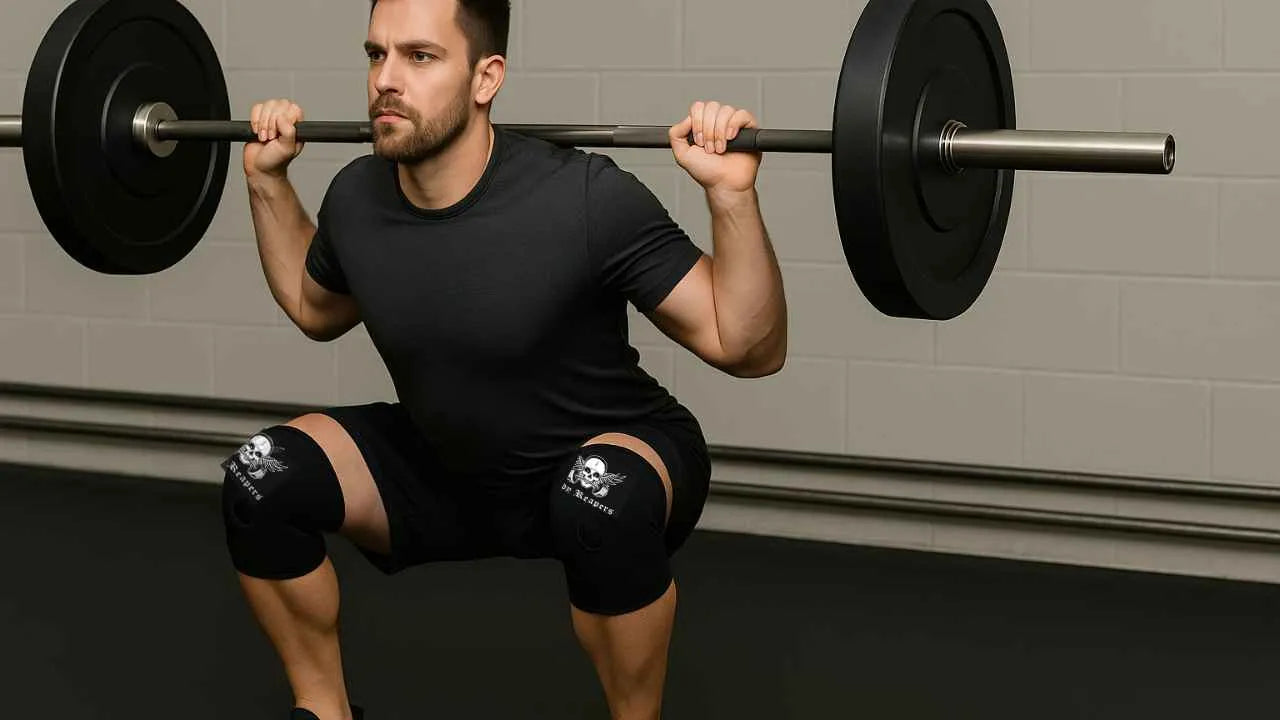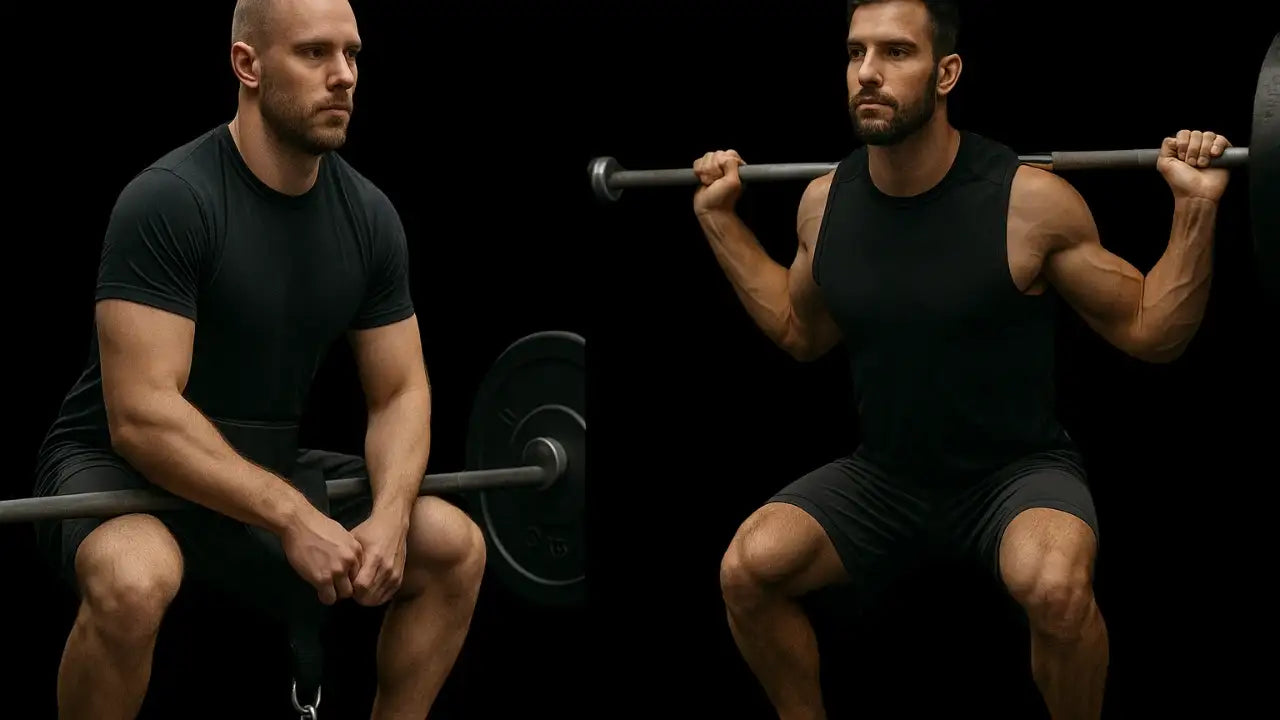Every lifter eventually hits the point where their grip gives out before their strength does. You’ve got the power for the deadlift, but the bar starts to slip halfway up. Pull-ups rip into your palms until training feels unbearable. Bench press leaves wrists sore instead of the chest pumped.
This is when the question comes up: Should I use lifting straps or lifting gloves?
As a trainer, I’ve guided both beginners and advanced athletes through this choice. It’s not about style. It’s about picking the gear that supports your training goals. The wrong choice can mean slower progress or more pain than necessary.
Let’s break it down step by step.
Lifting Straps or Lifting Gloves?
The truth is, both tools serve different purposes.
Lifting straps help you pull heavier weights by locking the bar into your grip. They reduce grip fatigue so your muscles can perform at full capacity.
Lifting gloves protect your hands from friction, blisters, and calluses. They add comfort, especially during long, high-volume workouts.
Grip fatigue often limits performance in pulling exercises before the target muscles are fully taxed. That’s why straps are often a go-to for heavy lifters.
Gloves, however, are commonly used in CrossFit and general gym training to reduce discomfort and prevent hand injuries.
What Is the Difference Between Lifting Straps and Weightlifting Gloves?
Lifting straps and gloves are built for different needs.
Lifting straps are usually made of leather, nylon, or cotton. You loop them around your wrist and the barbell, creating a locked-in grip. This makes it easier to handle heavy weights without worrying about your grip giving out.
For example, a powerlifter grinding through a 200 kg deadlift might have the back strength to lift it, but sweaty palms cause the bar to slip. Straps solve that problem by keeping the bar secure.
Weightlifting gloves are padded and protect your hands while lifting. They prevent friction and blisters, often add wrist support, and provide extra stability. They are perfect for high-rep workouts or exercises such as pull-ups.
For example, a beginner working on pull-ups may find their hands tear before their lats or arms tire out. Gloves provide that protection, allowing them to focus on movement instead of pain.
Pros of Lifting Straps

1- Handle Heavier Loads with Confidence
Lifting straps help you keep control of weights that would usually slip out of your grip. They are especially valuable for big lifts like deadlifts, heavy shrugs, and rows.
2- Fight Off Grip Fatigue
By taking pressure off your forearms, straps let you focus on the muscles you’re really trying to train. That means more reps, better form, and greater gains in both size and strength.
3- Break Through Plateaus
If your grip is limiting progress, straps let you push past sticking points.
Explore More: Weight Lifting Straps: Complete Guide to Benefits, Usage & Top Picks
Cons of Lifting Straps
1- Don’t Build Raw Grip Strength
Relying only on straps means your natural grip may lag. The balance strap works with grip-specific exercises.
2- Not Allowed in Competition
Most powerlifting federations ban straps, so you can’t depend on them for meet performance.
Related Article: Are Straps Allowed in Powerlifting? Rules, Exceptions & Smart Training Advice
3- Require Proper Use
They take a bit of practice to wrap correctly. Improper use can be unsafe. Weightlifting Straps, straps are widely used in training but not permitted in official lifting events.
Body Reapers lifting straps are built with padded neoprene and heavy-duty stitching, giving you lasting comfort and dependable support during your toughest lifts.
Pros of Weightlifting Gloves

1- Protect Your Hands
Gloves are a simple way to keep your palms safe from blisters and painful calluses. They give you that extra layer of protection so you can train without worrying about torn skin.
2- Improve Comfort
The added padding takes pressure off your hands and reduces friction with the bar. This makes longer workouts, especially high-rep sessions, much easier to push through.
3- Provide Wrist Stability
Many modern gloves come with built-in wrist wraps. These give your joints extra support, which is especially helpful during pressing movements like bench press or overhead press.
3- Reduce Bar Slipping
Good gloves use breathable, anti-slip materials. That means less slipping from sweaty palms and more focus on your lifts.
Cons of Weightlifting Gloves
1- Less Bar Connection
Some lifters don’t like the layer between their skin and the bar. Gloves can reduce that raw feel you get when lifting bare-handed.
2- Can Trap Sweat
Cheaper designs tend to hold in moisture. Over time, that leads to discomfort and even skin irritation.
3- Won’t Build Grip Strength
Gloves are great for comfort and protection, but they won’t help you lift more weight. If your goal is grip strength, you’ll need to train it directly.
Research Applied Ergonomics shows that protective gear reduces pressure and discomfort during repetitive hand use (ScienceDirect).
Gloves are great for general training, beginners, or athletes focusing on endurance. Body Reapers weightlifting gloves combine hand protection with breathable fabrics to keep hands dry and supported.
So, Lifting Straps or Lifting Gloves?
So which one should you choose? It depends on your training style.
- Opt for lifting straps if your goal is to achieve heavy pulls, muscle overload, and strength progression.
- Go with lifting gloves if your goal is comfort, protection, and consistency in training.
The smart approach? Keep both in your bag. Use straps on deadlift or row days. Use gloves for pull-ups, CrossFit, or general workouts. That way, you’re covered for both performance and protection.
Should Beginners Use Lifting Straps or Gloves?
For beginners, gloves are usually the better first choice.
Early training is about building form, consistency, and confidence. Gloves prevent painful calluses, reduce hand fatigue, and make workouts more enjoyable. This helps beginners stick with their program long enough to see results.
As your lifts get heavier, especially in deadlifts or shrugs, straps become valuable. They allow intermediate and advanced lifters to push harder when grip strength alone isn’t enough.
Conclusion
When it comes to lifting straps or lifting gloves, neither is universally better. Each is designed with a specific purpose in mind.
If you’re chasing strength and want to lift heavier without grip holding you back, straps are your friend. If you’re new to training or want to protect your hands during long sessions, gloves are the smarter pick.
The best approach? Use both strategically. Train with gloves for comfort and protection. Train with straps when performance is the priority.
Take your training to the next level. Don’t let sore hands or a weak grip hold you back.
Shop Body Reapers lifting straps and gloves today and lift stronger, safer, and smarter.





Leave a comment
This site is protected by hCaptcha and the hCaptcha Privacy Policy and Terms of Service apply.